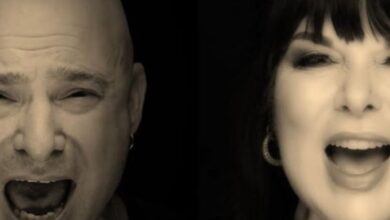Miley Cyrus Stuns Glastonbury with a Powerful Led Zeppelin “Black Dog”
When Miley Cyrus stepped onto the Pyramid Stage at Glastonbury Festival in June 2019, her set list carried a surprise that few expected—Led Zeppelin’s “Black Dog.” Mixing her own material with iconic rock covers, she chose one of the band’s most instantly recognizable tracks to showcase a different side of her artistry.
The performance came during a high-energy festival slot where she blended hits like “Wrecking Ball” and “Party in the U.S.A.” with songs outside her usual repertoire. “Black Dog” stood out as a bold pick, revealing her willingness to embrace classic rock on one of the world’s most visible music stages.
Cyrus’s rendition stayed close to the song’s heavy, blues-rooted structure, driven by the same swaggering guitar riffs that made it a staple of Led Zeppelin’s 1971 Led Zeppelin IV album. Her band kept the rhythm tight, ensuring the iconic riff landed with full impact before her vocals came in.
Rather than simply imitating Robert Plant’s delivery, Miley leaned into her own vocal strengths. She brought a raspy, rock-tinged edge to the verses, matching the song’s call-and-response structure with confidence while still putting her own stamp on the performance.
The choice of “Black Dog” reflected her increasing comfort in bridging genres. By 2019, Miley had already experimented with rock-influenced projects, and this cover further positioned her as an artist who could move fluidly between pop, country, and rock without hesitation.
Glastonbury’s massive crowd responded with enthusiasm. Many in the audience sang along to the instantly recognizable guitar hook, while others filmed and shared the moment online. The performance quickly circulated on social media, where fans debated and discussed her rock credentials.
Video clips from the festival show Miley pacing the stage with confidence, feeding off the crowd’s energy. Her live band, already known for its tight arrangements, delivered a faithful instrumental backdrop that gave the song the muscle it needed for such a large outdoor venue.
The inclusion of “Black Dog” was part of a broader trend in Miley’s live shows during this period. She had incorporated several rock covers into her sets, including tributes to Metallica, Nine Inch Nails, and Pink Floyd, reflecting a growing passion for classic and alternative rock influences.
At Glastonbury, the move also served as a nod to the festival’s history of hosting legendary rock acts. Performing “Black Dog” on that stage created a link between her own career and the long tradition of iconic performances that have defined the event since the 1970s.
While Led Zeppelin themselves have never played Glastonbury, their influence is deeply embedded in rock history. By choosing one of their signature tracks, Miley tapped into that legacy, ensuring her set resonated with both longtime rock fans and younger listeners unfamiliar with the original.
“Black Dog” is a demanding track for any vocalist, requiring shifts between sharp phrasing and sustained power. Miley handled these transitions with energy, showing that her range extended well beyond the pop hits that first made her famous.
The performance didn’t go unnoticed in the press. Outlets covering Glastonbury 2019 pointed out the unexpected set list choices, often highlighting “Black Dog” as a standout moment that underscored her versatility as a live performer.
For Cyrus, it was more than just a cover—it was a statement about where she saw herself artistically. By paying homage to Led Zeppelin in front of one of the largest live audiences of her career, she embraced the challenge of stepping outside her comfort zone.
The video of the performance remains available online, continuing to draw views from fans curious to see her take on one of rock’s most revered songs. It stands as a snapshot of an artist in evolution, testing boundaries and surprising audiences in real time.
Looking back, Miley’s “Black Dog” at Glastonbury is remembered not only for its shock value but also for how naturally it fit into her set. It was a clear reminder that the walls between genres are there to be crossed—and that great songs, in the right hands, can thrive in any era.





